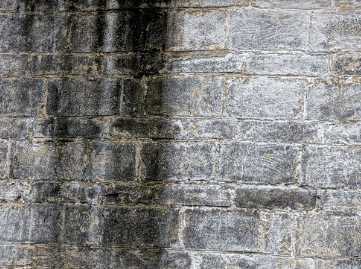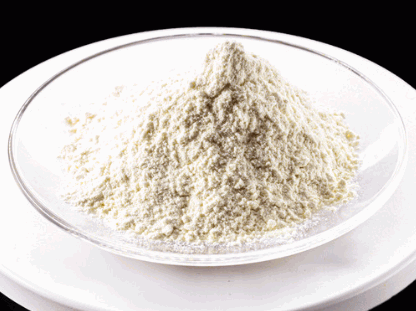There is nothing quite as inviting and cosy as a fireplace with a fire burning away. For those of us who are lucky enough to have a fireplace in our homes, the cold winter nights don't seem quite so chilly. But there is one big problem with a real fire in a real fireplace and that is soot stains on the fireplace brick. Soot residue can be difficult to remove but there are a range of techniques that you can use to clean a brick fireplace and have it look like new again.
Soot is the leftover residue when carbon doesn't burn completely. It is made up of very fine black particles that are smaller than dust. Their tiny size means that they can reach areas that other types of dirt can't. Soot is mildly acidic which is why it can be toxic to waterways.

The tiny size of the soot particles is what makes soot stains so difficult to clean. They can embed themselves in even the smallest grooves and indents. This is especially the case with brickwork.
Your fireplace is likely to have a brick surround and this can quickly become stained with soot. Bricks are a porous material with a large number of tiny holes into which the soot particles can affix themselves. This means that simply wiping with plain water is unlikely to remove the soot.
The other reason why soot stains are so hard to clean is because of the heat of the fire. This heat further opens the pores in the bricks, driving the soot even deeper.
Soot stains are unsightly and they can spoil the look of your fireplace, which is a shame because a fireplace is such a perfect centrepiece to your living space. Cleaning soot stains regularly will help to ensure that your fireplace looks beautiful and inviting.
Perhaps more importantly, however, soot can actually damage the materials to which it sticks. This is because of its acidic nature which will, over time, corrode your brick fireplace.

An important thing to remember before you start to remove soot is that you have to be very careful when cleaning bricks. Especially bricks older than around 20 years. Their porous nature means that cleaning bricks with harsh chemicals or very corrosive acids can damage them irreparably.
Because of this, it is best to start with the gentlest cleaning solutions first, and then if they don't shift the soot, work your way up to stronger methods. If you are worried about damaging the brick, you could try each cleaning method on a small area that isn't that visible. This will give you a good idea of whether or not it will be suitable to use on the whole fireplace.
You should also make sure that you have all your equipment ready before you start. You will need:

Removing soot is a dirty job. There is no doubt about that. And because you are cleaning your fireplace in the middle of your home, it is a good idea to try and prevent that dirt from getting everywhere.
Laying something like a waterproof drop cloth on the floor will help to prevent soot from getting into your carpet or hard flooring. You should also remove any valuables from the area so that they don't get covered in soot.
When you start cleaning soot stains, at least some of the tiny soot particles will become airborne and can travel a surprising distance. If you're interested in learning more, feel free to check our article on "Best Way To Clean Laminate Floors".
You should also ensure that the fire is completely cool before you begin cleaning. If the bricks are warm, this could affect the way that your cleaning solution behaves and could make it more likely that the bricks will get damaged.
You should empty the fireplace of any wood, loose soot, and ashes. This will allow you to fully clean the fireplace without it immediately getting dirty again. It will also prevent you from getting covered in soot yourself.
You can use the brush attachment of your vacuum cleaner to clean out as much soot as possible. Then use plain water to wash away any soot that is just sitting on top of the bricks.
This is the gentlest method of removing soot from fireplace bricks. A dish soap detergent will help to lift soot from bricks without damaging the bricks themselves.
Mix half a cup of dishwashing liquid or dish soap with four cups of water and pour it into a spray bottle. You could also try adding about two tablespoons of table salt to act as a gentle abrasive.
Spray the bricks liberally with the cleaning solution making sure that they are as saturated as possible.
Use a scrub brush (and a lot of elbow grease!) to remove the soot stains. Start at the top because the dirty water will drip down to the bottom bricks.
Use warm water and a sponge to rinse the bricks of dish soap as much as possible. Then you will be able to see if you need to repeat the cleaning process again.

If dishwashing liquid hasn't done the job, you can move on to a stronger method. White vinegar contains acetic acid which can help to break up the soot stains and lift them from the brick.
The acid is, however, slightly corrosive so you should be careful with older bricks not to use too much or to leave the solution on for too long.
Mix equal parts vinegar and water and place the vinegar solution in a spray bottle. Spray it onto the bricks, starting at an area at the top of the fireplace.
Leave the solution on the fireplace bricks for 10 minutes and then go in and clean with a scrub brush. Rinse with hot water as soon as possible to remove the white vinegar and check for remaining stains. If you're interested in learning some apple cider vinegar cleaning hacks, we suggest checking out our dedicated post on the subject.

A baking soda paste can be an effective solution for stubborn soot stains. The baking soda will agitate the soot particles and help them lift off the porous brick.
Mix equal parts baking soda and water. This will form a thin paste. Apply the paste to the brick fireplace in a thin layer, adding thicker sections where the soot is worse. Then leave for 10 minutes but don't let the paste fully harden as this could damage the bricks.
Go in with a scrub brush and clean the bricks before wiping them down with warm water and a damp sponge. Remember not to scrub too hard because baking soda can be abrasive. Instead, repeat the process if necessary.

Scrubbing Bubbles and other foaming bathroom cleaners can also be an effective method of removing soot. This is because their formula is designed to cut through and lift grease and grime, which can also help to remove soot from brick.
This can be a good method to try if the standard gentler methods haven't worked before you reach for the harsh chemical solutions. You should make sure that you wear gloves, however, as these cleaners could irritate your skin.
Spray the cleaner onto the black streaks and then leave it to sit for 15-20 minutes. During this time, the foam should agitate the soot and help it to lift from the brick.
Then go in and scrub with circular motions before rinsing with hot water. You may need to repeat the process a few times.
If none of the more natural products has worked, it might be time to go for a harsher cleaning agent. TSP, trisodium phosphate, is a very effective deep-cleaning agent that can easily cut through even the most stubborn grease and grime and is found in most hardware stores. But it is something that you will need to be very careful with.
Trisodium phosphate is potentially dangerous to your health, especially if you breathe it in. It is also a skin irritant. Because of this, if you are going to use TSP you should make sure that you wear the right protective gear. You should wear rubber gloves, eye protection such as safety glasses, and a face mask. You should also make sure that you have long sleeves and long trousers. You should also always ensure that you follow the manufacturer's instructions to the letter.
The actual cleaning with TSP is similar to the baking soda paste. Make a cleaning solution with eight tablespoons of TSp mixed with one gallon of water. This will create a thin place that can be applied to the bricks with a paintbrush.
Leave the solution for 0 minutes then start scrubbing with a hard-bristled scrub brush. This should remove soot quite quickly and leave you with clean bricks.
Then rinse thoroughly with warm water so that all of the solution is removed from the bricks.
It may not be a good idea to use this method to clean fireplace bricks that are older than 20 years as it could damage them. Try the solution on a small inconspicuous spot first to see how the bricks react.

Once you have cleaned the entire fireplace surround, you may find that there are small spots that still have some soot on them. To reduce damage to the fireplace bricks, it usually isn't a good idea to clean the whole thing again. Instead, focus on the areas that need it most with some spot cleaning.
Use whatever method you want: dish soap, vinegar solution, baking soda, or TSP but only apply it to the small areas that have soot remaining. Then use the usual method of scrubbing with a scrub brush followed by a rinse with warm water. You can also check out our post "Remove Efflorescence From Brick With Vinegar", for more additional insights.
If none of these methods has worked to clean bricks effectively, a professional cleaning company could be your best bet. Rather than throwing harsher and harsher cleaning methods that could end up damaging the brickwork, a professional cleaning company will approach the situation with knowledge and experience to find the correct cleaning solution and method that will clean fireplace bricks while preserving the surround.
If you need some help with removing soot from brick, get in touch with us here at The Sparkle Gang. Our cleaning technicians have years of experience with removing even the most stubborn of stains and will take care to do everything they can to remove as much of the remaining soot as possible without causing any damage to your beautiful fireplace surround. We use the highest quality cleaning solutions and methods and approach every job with care and consideration.